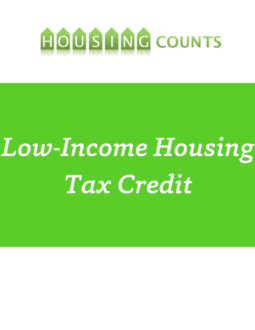Expand and Support Use of the LIHTC
The Low-Income Housing Tax Credit (LIHTC) is one of the largest sources of federal funding for affordable housing. Investors receive the credit against income tax liability annually for ten years. In return, the investors generate equity for qualifying rental developments serving families with incomes below 60 percent of the area median income. In exchange for the credits, project owners must agree to keep eligible units affordable for at least 15, and usually 30, years. Although the LIHTC is a federal program, it is administered principally through state housing finance agencies, which have substantial discretion in setting priorities for the allocation of credits. Federal law provides for two different types of LIHTCs. The larger of the two credits — the 9 percent credit — is allocated to states on a per-capita basis. The 9 percent credits are allocated by the Minnesota Housing Finance Agency through a competitive application process, with one primary application cycle awarded in the fall and a secondary cycle for remaining credits awarded in January. Because the credit is large and the supply is limited, competition for these credits is very strong.
The second, less well-known, type of Low-Income Housing Tax Credit is the 4 percent credit. (The 4 percent and 9 percent figures refer to the approximate percentage of the eligible project costs that investors may claim on federal tax returns for a 10-year period.)
In general, both the 4 percent and the 9 percent LIHTC are designed to cover the gap between the costs of developing affordable rental homes and the amount of financing that may be raised based on the rents that moderate-income families can afford. Although the exact amounts vary substantially by project and market conditions, a good rule of thumb is that the 9 percent credit covers about half of a project’s cost, while the 4 percent credit covers about one-quarter.
Also there are two important advantages to the 4 percent credit. First, it is not subject to the same annual allocation caps that apply to the 9 percent credit. By increasing their use of the 4 percent credit, states can overcome the limited availability of 9 percent credits.
Second, they are not subject to the annual competition held for the 9 percent credits. Any project that is financed through tax-exempt private-activity bonds, serves families with incomes below 60 percent of the area median income and meets other eligibility criteria automatically qualifies automatically for the 4 percent LIHTC.
Where is this policy most applicable?
Because 4 percent tax credits generate less capital than 9 percent credits, they are often used for rehabilitation of older rental homes (whether or not they are subsidized) and the preservation of subsidized rental developments which tend to be less capital intensive than new construction. Accordingly, areas where the affordable multifamily rental stock is aging may find 4 percent tax credits particularly useful.
4 percent tax credits can also be used for new construction, particularly if a state or locality is willing to commit matching funds to make the project work. By matching 4 percent credits with available federal funds, or with state and local matching funds, 4 percent credits can be used in almost any market. Thus the projects gain the benefit of the 4 percent credit with a consequent reduction in costs to the state and local government.
The City of St. Louis Park’s early experience with its mixed income housing policy suggests that utilizing the 4 percent credits allows developers to include 20 percent affordable units into new developments, rather than the lower percentage of affordable units required in St. Louis Park’s policy.
Where else have tax credits been used?
